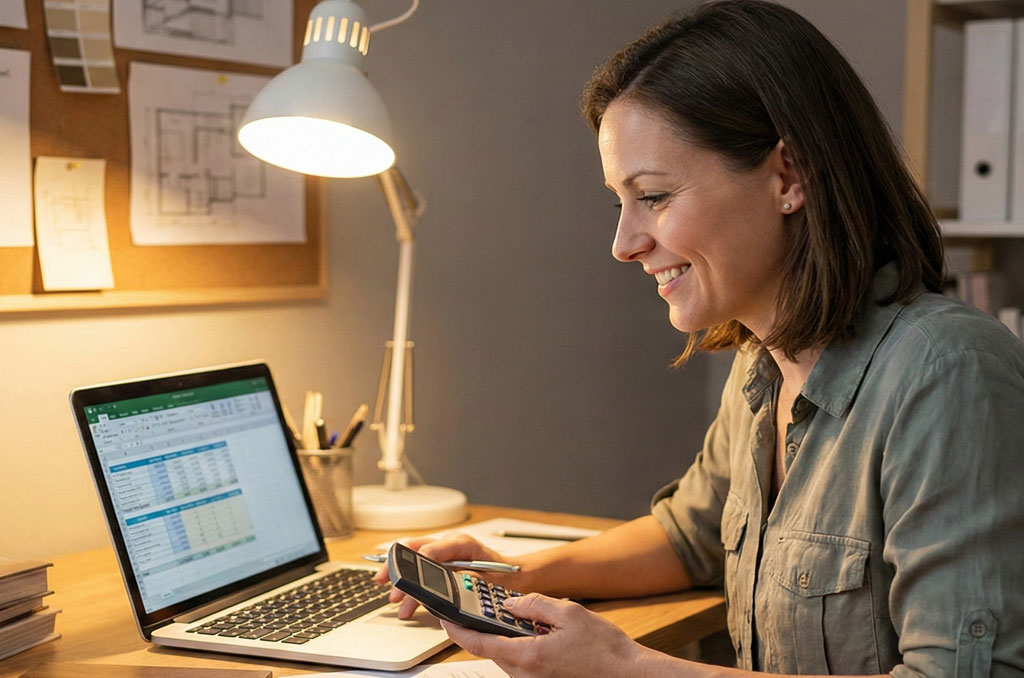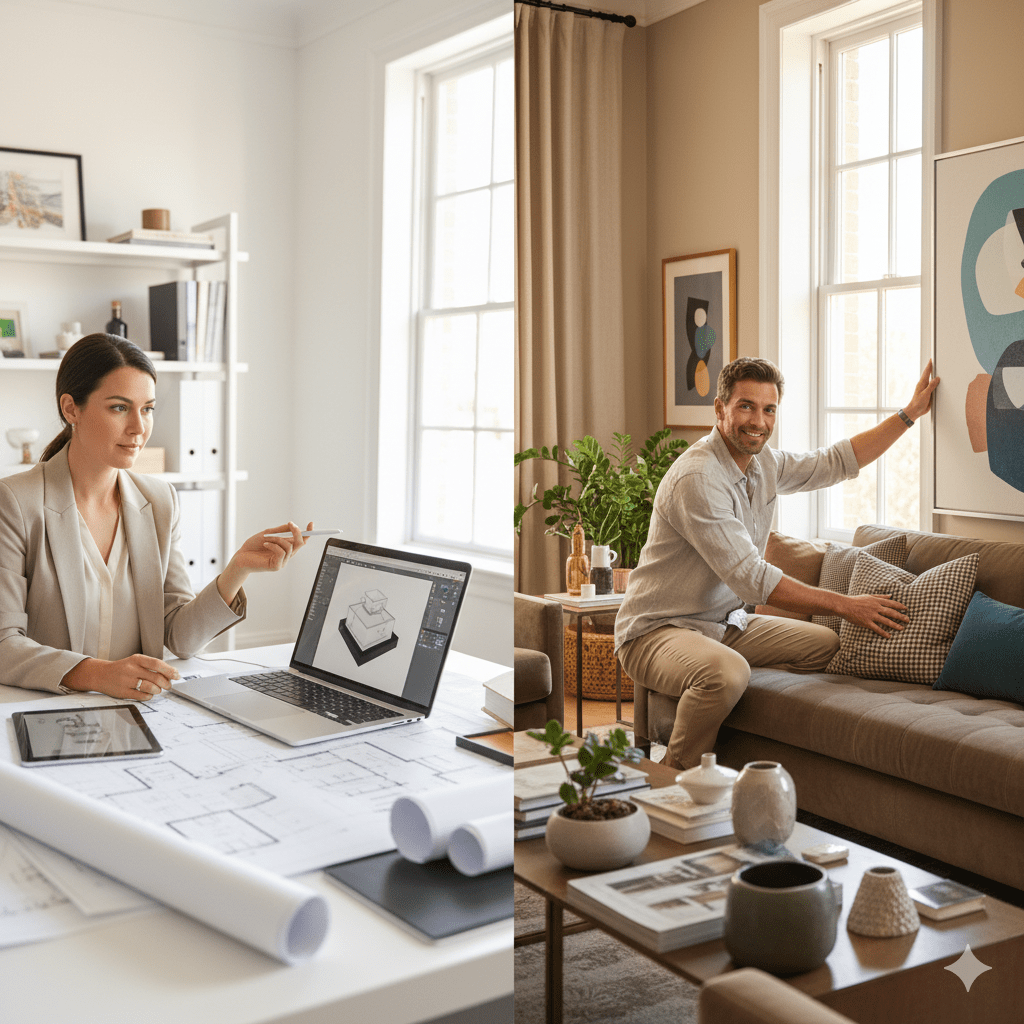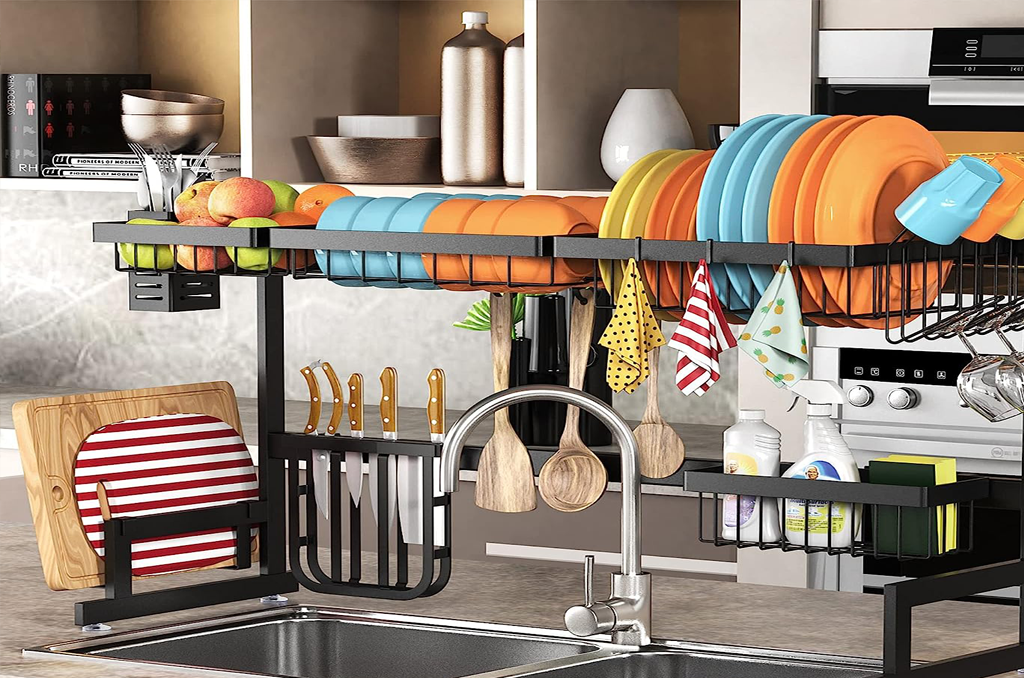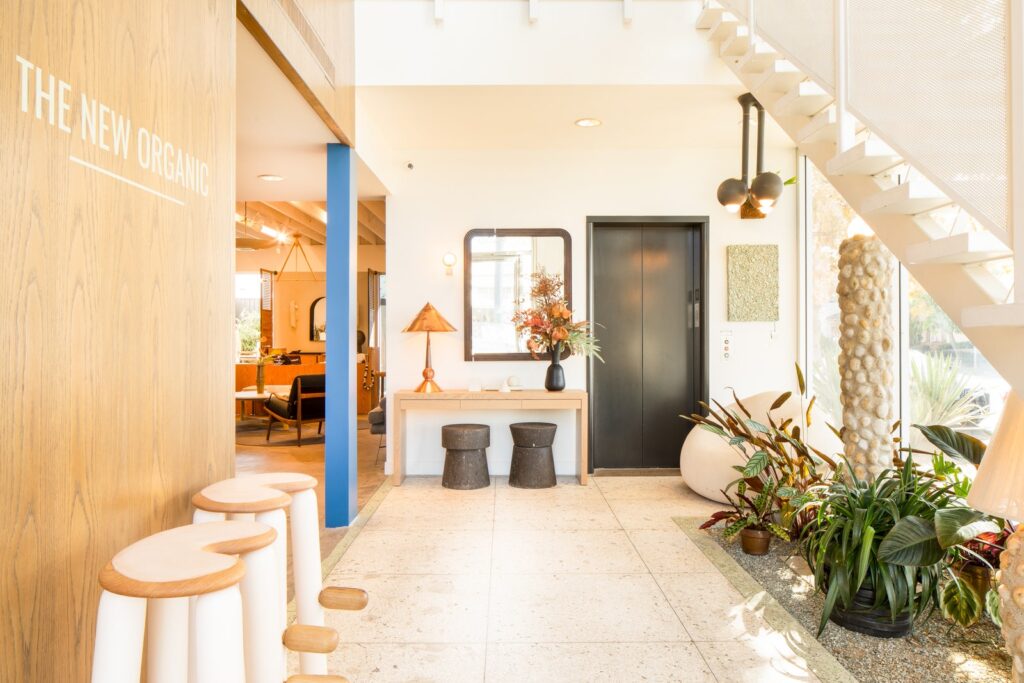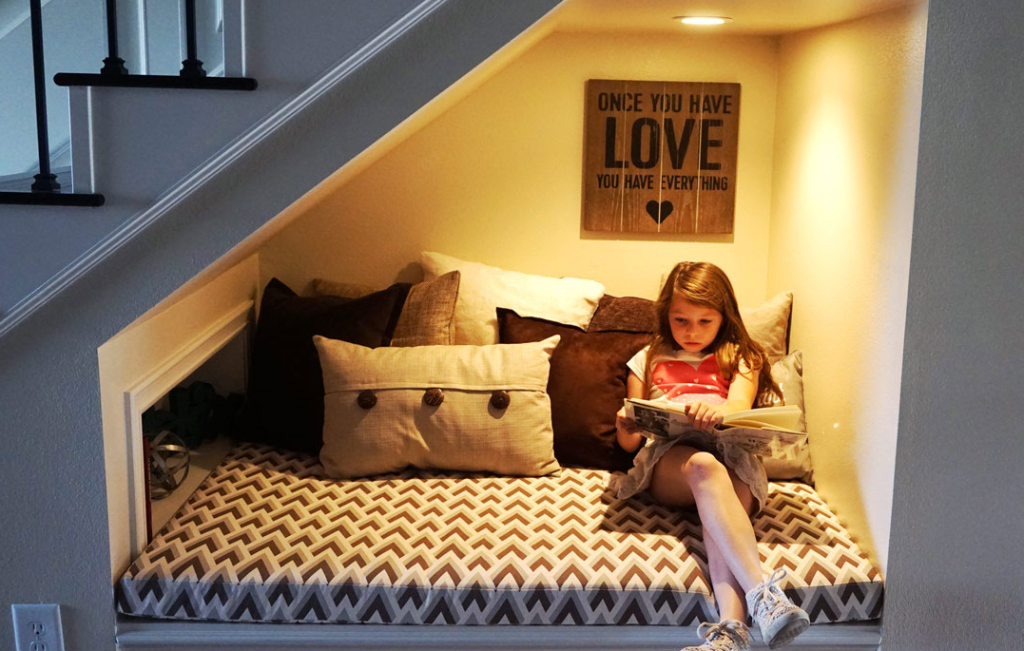
How to Find the Best Interior Designer Near You
Transforming your living space into a stylish and functional haven is an exciting endeavor, but it can also be a daunting task. That’s where an interior designer comes in. These professionals have the expertise to bring your vision to life, ensuring every detail is thoughtfully planned and executed. However, finding the right interior designer, especially one who is local, can be a bit of a challenge. How do you know if they’re the right fit for your style, needs, and budget? This guide will help you navigate the process, offering practical tips and a handy checklist to ensure you find the best interior designer near you.
 |
Firstly, it’s essential to do your research. In today’s digital age, you can start your search online. Look for designers in your area and review their websites and social media profiles to get a sense of their work. Personal recommendations from friends, family, or neighbors can also be invaluable. They can provide honest feedback based on their experiences, giving you a better idea of what to expect.
Next, you’ll want to dive into the designers’ portfolios. This is where you can see their creativity and versatility firsthand. Does their style resonate with you? Do they have experience with projects similar to yours? These are important considerations to ensure they can bring your vision to life. Additionally, consider their experience and credentials. While a formal education in interior design is a plus, practical experience and membership in professional organizations like the American Society of Interior Designers (ASID) can be just as crucial.
Understanding the financial aspect is another key step. Different designers have various pricing structures – some charge a flat fee, others bill by the hour, and some take a percentage of the project cost. It’s essential to find someone who is transparent about their fees and can work within your budget. Remember, the goal is to get the best value for your money, not just the lowest price.
Communication is another vital factor. The best designers are good listeners who understand your needs and preferences. They should be willing to collaborate with you and keep you updated throughout the project. Additionally, check their availability and timeline. Ensure they have the time to commit to your project and that their estimated timeline aligns with your expectations.
Finally, asking the right questions during your initial consultations can make a significant difference. These questions can help you gauge their compatibility with your project and ensure there are no surprises down the road. From their design process and qualifications to how they handle changes and communicate, these insights will help you make an informed decision.
By following these steps and keeping our checklist handy, you’ll be well-equipped to find an interior designer who can transform your space into the home of your dreams. So, let’s dive into the details and get you started on your journey to finding the perfect local interior designer.
Do Your Research:
 Embarking on the journey to transform your living space requires more than just a vision; it necessitates finding the right interior designer who can bring that vision to life. Doing thorough research is the cornerstone of this process. By investing time in research, you ensure that the interior designer you choose is not only skilled but also a good fit for your specific needs. Here’s how to effectively conduct this research.
Embarking on the journey to transform your living space requires more than just a vision; it necessitates finding the right interior designer who can bring that vision to life. Doing thorough research is the cornerstone of this process. By investing time in research, you ensure that the interior designer you choose is not only skilled but also a good fit for your specific needs. Here’s how to effectively conduct this research.
Start with Online Resources
The internet is an invaluable tool when searching for a local interior designer. Begin by using search engines to identify designers in your area. Phrases like “interior designers near me” or “top interior designers in [your city]” can yield extensive lists of professionals.
Once you have a list, delve into their websites and social media profiles. These platforms often showcase their portfolios, client testimonials, and an overview of their design philosophy. For instance, a designer’s Instagram page might display their latest projects, offering a glimpse into their aesthetic style and the breadth of their work. Reading client reviews on platforms like Google Reviews or Yelp can also provide insights into the designer’s reliability, professionalism, and the satisfaction level of their clients.
Seek Personal Recommendations
While online research is beneficial, personal recommendations can offer a layer of trust and authenticity that online reviews might lack. Talk to friends, family, or neighbors who have recently worked with interior designers. Their firsthand experiences can provide honest feedback about what to expect.
For example, a friend who just remodeled her home might recommend her designer, praising their attention to detail, punctuality, and ability to stay within budget. Such recommendations can be incredibly valuable as they come from trusted sources who have no incentive to exaggerate their experiences.
Explore Professional Networks and Associations
Professional networks and associations, such as the American Society of Interior Designers (ASID), can be excellent resources. These organizations often have directories of members who adhere to high professional standards. Membership in such associations usually requires a certain level of education and experience, providing an additional layer of credibility.
Visiting the ASID website or similar platforms can help you identify certified interior designers in your area. These designers are likely to be committed to continuing education and upholding industry standards, ensuring a higher level of professionalism and expertise.
Attend Local Design Events and Showcases
Engaging with the local design community can also be a great way to find a talented interior designer. Attend home shows, design expos, and open house events where designers showcase their work. These events allow you to see their work in person and sometimes even meet the designers themselves.
For instance, at a local home show, you might be impressed by a booth featuring a beautifully designed living room setup. This direct interaction provides an opportunity to ask questions about their process, see their craftsmanship up close, and get a sense of their personality and approach.
Utilize Social Media Platforms
Social media platforms like Pinterest, Instagram, and Houzz are treasure troves of design inspiration and professional showcases. Follow local interior designers to keep up with their latest projects and design ideas. Many designers use these platforms to share their creative process, from initial sketches to the final reveal, giving you a comprehensive view of their work and style.
For example, a designer’s Pinterest board might be filled with mood boards and design concepts, helping you understand their design process and whether it aligns with your vision. Instagram stories and posts can offer behind-the-scenes looks at ongoing projects, client interactions, and even testimonials.
 |
Check Their Portfolio:
When embarking on the quest to find the best interior designer near you, one of the most telling resources at your disposal is the designer’s portfolio. A portfolio offers a visual narrative of a designer’s style, capabilities, and versatility. By carefully examining a designer’s portfolio, you can gauge whether their previous work aligns with your vision and expectations. Here’s how to effectively scrutinize a portfolio to make an informed decision.
Assessing Style and Aesthetic
The primary function of a portfolio is to showcase a designer’s style and aesthetic sensibility. As you peruse through their work, pay attention to the overall look and feel of their designs. Do they align with your personal taste? Some designers may specialize in a particular style, such as modern, minimalist, traditional, or eclectic. Others might demonstrate a range of styles, showing their ability to adapt to different client preferences.
For instance, if you prefer a contemporary style with clean lines and a neutral color palette, look for these elements in the portfolio. Conversely, if you are drawn to a more traditional or ornate design, the portfolio should reflect rich textures, classic furniture, and intricate detailing. The consistency and appeal of the designer’s aesthetic in their previous projects will help you determine if they are a good match for your tastes.
Evaluating Quality and Attention to Detail
Beyond style, a portfolio is a testament to the quality of a designer’s work and their attention to detail. High-quality photos highlighting the intricacies of design elements can give you a good indication of the designer’s craftsmanship and meticulousness. Look for evidence of well-executed finishes, thoughtful selections of materials, and cohesive color schemes.
For example, in a well-photographed portfolio, you might notice the seamless integration of various textures and materials in a living room setup, such as the harmony between wood finishes, fabrics, and lighting. These details suggest a high level of care and skill in the design process. Additionally, the presence of innovative solutions, such as custom-built furniture or unique layout adjustments, can indicate a designer’s creativity and problem-solving abilities.
Before-and-After Comparisons
Portfolios that include before-and-after comparisons are particularly valuable. They provide clear evidence of a designer’s transformative capabilities. By seeing the initial state of a space and the resulting design, you can better appreciate the designer’s vision and effectiveness in executing significant improvements.
For instance, a before-and-after comparison of a cramped, outdated kitchen turned into a sleek, modern culinary space demonstrates the designer’s ability to maximize functionality and aesthetic appeal. Such transformations highlight the designer’s capacity to address and overcome spatial challenges, thereby enhancing the overall usability and beauty of a space.
Diversity of Projects
A comprehensive portfolio should exhibit a range of project types and scales. This diversity is a good indicator of the designer’s versatility and ability to handle different kinds of projects. Look for a mix of residential and commercial spaces, as well as varying room types such as kitchens, bathrooms, living areas, and bedrooms.
For example, a portfolio that includes the redesign of a cozy apartment, the renovation of a sprawling family home, and the layout of a sleek office space shows that the designer is adept at tailoring their approach to suit different environments and client needs. This adaptability is crucial, as it suggests the designer can pivot their skills to meet the specific demands of your project.
Alignment with Budget and Scale
Lastly, consider the scale and apparent budget of the projects featured in the portfolio. It’s important that the designer has experience with projects similar in size and scope to yours. Whether you’re looking to redesign a single room or undertake a complete home makeover, the portfolio should reflect comparable work.
For instance, if you are planning a modest kitchen renovation, a portfolio filled with high-budget luxury estates might not be the best point of reference. Instead, look for examples of more modest, yet creatively and efficiently designed spaces. This alignment ensures the designer can work effectively within your budget constraints while still delivering high-quality results.
Consider Experience and Credentials:
 When searching for the best interior designer near you, one of the most crucial factors to consider is the designer’s experience and credentials. These elements provide a solid foundation for assessing a designer’s capability to handle your project effectively and deliver high-quality results. Let’s delve into why these aspects matter and how you can evaluate them.
When searching for the best interior designer near you, one of the most crucial factors to consider is the designer’s experience and credentials. These elements provide a solid foundation for assessing a designer’s capability to handle your project effectively and deliver high-quality results. Let’s delve into why these aspects matter and how you can evaluate them.
Evaluating Experience
Experience plays a pivotal role in the world of interior design. A designer with substantial experience brings a wealth of knowledge and a refined skill set to the table. Here are some key points to consider:
Years in the Industry: Designers who have been in the industry for many years have likely encountered and overcome various design challenges. This extensive experience equips them with the ability to anticipate potential issues and implement solutions efficiently. For instance, a designer with over a decade of experience will have a deep understanding of design trends, materials, and techniques that stand the test of time.
Project Diversity: A versatile designer should have experience with a variety of project types, including residential homes, commercial spaces, and specific areas like kitchens or bathrooms. This diversity indicates their ability to adapt to different client needs and project scopes. For example, a designer who has worked on both small apartments and large estates can bring a breadth of creative solutions suitable for various spaces.
Specialized Expertise: If your project has unique requirements, such as sustainable design, historical home renovation, or optimizing small spaces, it’s beneficial to find a designer with specialized expertise in these areas. A designer experienced in green building, for instance, will be well-versed in sourcing eco-friendly materials and implementing energy-efficient solutions, ensuring your project aligns with sustainable practices.
Assessing Credentials
Credentials offer a measure of a designer’s formal education, professional recognition, and commitment to maintaining industry standards. Here’s what to look for:
Educational Background: While not all successful designers have formal education, a degree in interior design or a related field can be an advantage. This educational foundation ensures the designer is knowledgeable about design principles, architectural basics, and the latest industry trends. For instance, a designer with a Bachelor’s degree in Interior Design will have studied various aspects of design, from spatial planning to color theory.
Professional Certifications and Memberships: Membership in professional organizations, such as the American Society of Interior Designers (ASID), or certifications like the National Council for Interior Design Qualification (NCIDQ), reflect a commitment to professional standards and continuous learning. Designers who are ASID members or NCIDQ certified have met rigorous standards of education, experience, and examination, which assures you of their competence and professionalism.
Awards and Recognition: Awards from industry bodies or features in design publications can be a testament to a designer’s skill and innovation. These accolades often signify peer and industry recognition of the designer’s exceptional work. For example, a designer who has won a “Best Interior Design” award at a local home show demonstrates excellence in their field and the ability to deliver outstanding results.
Evaluating Client Testimonials and Case Studies
Client testimonials and detailed case studies provide invaluable insights into a designer’s practical experience and effectiveness:
Testimonials and Reviews: Look for reviews and testimonials on the designer’s website or on independent review platforms. Positive feedback from previous clients regarding their experience, the designer’s professionalism, and the final outcome can be very revealing. A designer with numerous five-star reviews praising their ability to meet deadlines, stay within budget, and achieve clients’ vision is likely to provide similar satisfaction for your project.
Detailed Case Studies: Some designers offer detailed case studies of their projects, outlining the challenges faced, solutions implemented, and the overall process. These case studies can give you a comprehensive understanding of how the designer works and their problem-solving skills. For instance, a case study on a small apartment renovation might describe how the designer maximized space through clever storage solutions and multi-functional furniture, showcasing their creativity and ingenuity.
Budget and Fees:
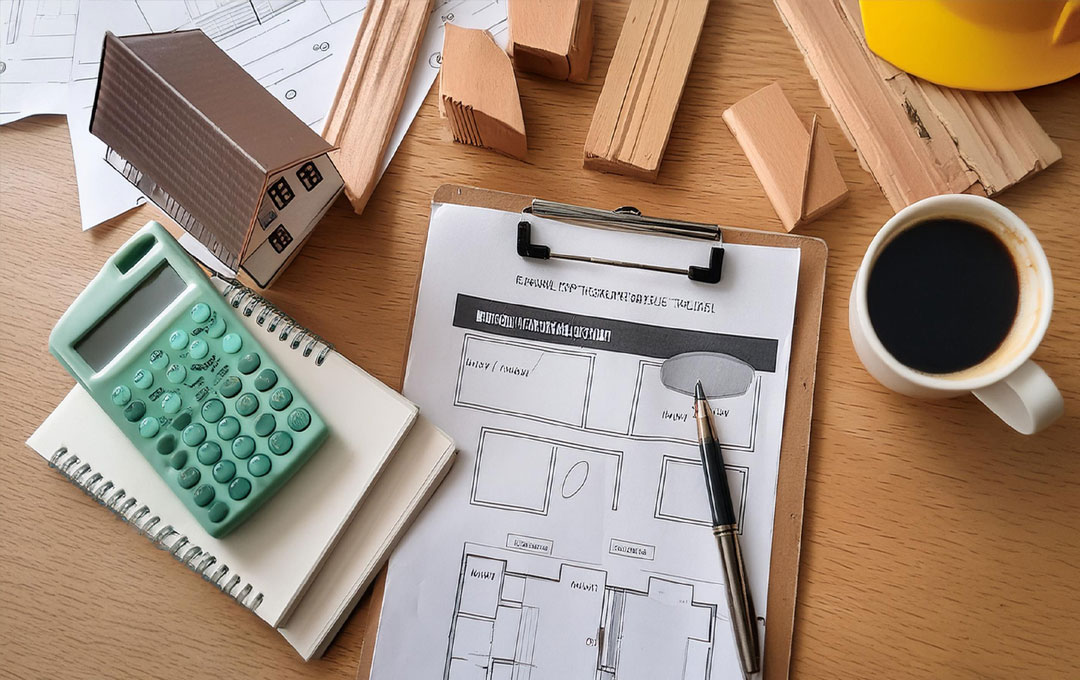 When searching for the best interior designer near you, understanding the financial aspects of your project is crucial. Budget and fees are significant factors that will influence your choice of designer and the scope of your project. Here’s how to navigate these considerations effectively.
When searching for the best interior designer near you, understanding the financial aspects of your project is crucial. Budget and fees are significant factors that will influence your choice of designer and the scope of your project. Here’s how to navigate these considerations effectively.
Establishing Your Budget
Before you even start contacting interior designers, it’s essential to establish a clear budget for your project. Determine how much you are willing to spend overall and consider breaking this down into specific categories, such as materials, furnishings, labor, and design fees.
For example, if your total budget is $30,000 for a living room redesign, you might allocate $15,000 for furniture and decor, $5,000 for materials, $7,000 for labor, and $3,000 for design fees. Having these figures in mind will help you communicate your expectations clearly to potential designers and ensure that you find someone who can work within your financial constraints.
Understanding Different Fee Structures
Interior designers typically charge for their services in one of several ways: hourly rates, fixed fees, cost-plus, or per square foot. Understanding these fee structures will help you compare designers and choose the one that best fits your budget and project scope.
Hourly Rates: Some designers charge by the hour, which can range widely depending on their experience and location. This method is often suitable for smaller projects or consultations.
Example: A designer charging $100 per hour might be ideal if you need help selecting paint colors or choosing new furniture for a single room.
Fixed Fees: Other designers offer a fixed fee for their services, which can provide clarity and predictability in budgeting. This fee is usually based on the project’s scope and complexity.
Illustration: For a complete home redesign, a designer might charge a fixed fee of $10,000, covering everything from initial consultations to the final installation.
Cost-Plus: In this model, the designer charges a percentage of the total project cost as their fee. This percentage can vary but is typically around 10-20%. This structure aligns the designer’s interests with the project’s overall budget.
Example: If your project costs $50,000 and the designer’s fee is 15%, you would pay an additional $7,500 as the design fee.
Per Square Foot: Some designers charge based on the size of the space being designed, which is particularly common in larger projects. The rate per square foot can vary significantly.
Illustration: A designer might charge $10 per square foot for a 2,000-square-foot home, resulting in a $20,000 fee.
Discussing and Comparing Fees
When meeting with potential designers, discuss their fee structures openly and ask for detailed estimates. Ensure you understand what is included in their fees and any additional costs that might arise. Some designers might include project management, purchasing, and installation in their fees, while others might charge extra for these services.
For instance, one designer might quote a lower fee but charge separately for managing contractors and ordering materials, while another might offer a comprehensive package that covers all aspects of the project. Comparing these details will help you assess the true cost of hiring each designer and avoid unexpected expenses.
Evaluating Value for Money
While cost is an important factor, it should not be the sole determinant in your decision. Consider the value you are getting for your money. A more experienced designer with a higher fee might save you money in the long run by avoiding costly mistakes and achieving a superior result. Look at their portfolio, testimonials, and overall professionalism to gauge whether their fees are justified by the quality of their work.
For example, a highly recommended designer with a stunning portfolio and numerous satisfied clients might charge more, but their expertise and efficiency could lead to a smoother process and a more beautiful end result. In contrast, a less expensive designer might lack the experience or resources to handle complex projects, potentially leading to delays and additional costs.
Flexibility and Payment Plans
Discuss the payment terms and see if the designer offers flexibility, such as payment plans or phased billing. This can make it easier to manage your budget and cash flow throughout the project. Some designers might require a deposit upfront, with the balance paid in installments as milestones are reached.
For example, a designer might request a 25% deposit at the start, with additional payments due at key stages, such as after the design phase, mid-construction, and upon project completion. This phased approach can help you manage expenses and ensure that you are satisfied with the progress before making full payment.
Communication Skills:
 Effective communication is a cornerstone of a successful interior design project. When looking for the best interior designer near you, evaluating their communication skills is just as important as considering their portfolio, experience, and fees. Clear and open communication ensures that your vision is accurately translated into reality, and any issues are addressed promptly. Here’s how to assess and appreciate the importance of communication skills in your search for the right interior designer.
Effective communication is a cornerstone of a successful interior design project. When looking for the best interior designer near you, evaluating their communication skills is just as important as considering their portfolio, experience, and fees. Clear and open communication ensures that your vision is accurately translated into reality, and any issues are addressed promptly. Here’s how to assess and appreciate the importance of communication skills in your search for the right interior designer.
Initial Consultation and First Impressions
The initial consultation is your first opportunity to gauge a designer’s communication skills. Pay attention to how they listen to your ideas, preferences, and requirements. A good interior designer should actively listen and ask pertinent questions to fully understand your vision and needs.
For example, during your first meeting, a skilled designer will not only take notes but will also ask clarifying questions about your lifestyle, how you use different spaces in your home, and what your priorities are. This shows that they are engaged and committed to tailoring the design to fit your specific circumstances.
Clarity and Transparency
Effective communication also involves clarity and transparency about the design process, timelines, and costs. A designer who communicates clearly will provide a detailed outline of the project phases, from initial concepts to final installation, and explain what you can expect at each stage.
For instance, a well-organized designer will present a clear plan with estimated timelines and milestones, helping you understand when key decisions need to be made and when significant progress will occur. They should also be transparent about potential delays and how they plan to manage them, ensuring you are always in the loop.
Responsiveness and Availability
Responsiveness is another critical aspect of communication. An ideal interior designer should be readily available to answer your questions, address concerns, and provide updates throughout the project. This responsiveness helps build trust and ensures a smooth workflow.
For example, if you email a designer with a question about material choices and they respond promptly with detailed information, it indicates their commitment to keeping the project on track and ensuring you are comfortable with the decisions being made. Conversely, delayed or vague responses can lead to frustration and misunderstandings.
Collaboration and Flexibility
A successful interior design project is a collaborative effort between you and the designer. Look for a designer who values your input and is flexible enough to incorporate your ideas into the design. This collaboration ensures that the final result reflects your personality and meets your expectations.
For instance, if you suggest a particular color scheme or furniture style, a good designer will consider your input seriously and discuss how it can be integrated into the overall design. They should also be open to feedback and willing to make adjustments as needed, rather than insisting on their vision alone.
Problem-Solving and Conflict Resolution
Design projects often come with unexpected challenges and conflicts. A designer with strong communication skills can navigate these issues effectively by keeping you informed and proposing practical solutions. Their ability to handle problems calmly and transparently can significantly impact the project’s outcome.
For example, if there is a delay in the delivery of materials, a proficient designer will communicate the issue immediately, explain the impact on the timeline, and offer alternative solutions to keep the project moving forward. This proactive approach helps mitigate stress and ensures you remain confident in the project’s progress.
Documentation and Follow-Up
Finally, good communication is reflected in thorough documentation and follow-up. Designers should provide detailed written proposals, contracts, and progress reports to ensure there is no ambiguity about the project scope, costs, and timelines.
For instance, a designer might send you a weekly update with photos of the progress, notes on completed tasks, and what to expect next. This level of documentation keeps everything transparent and allows you to track the project’s evolution, making it easier to spot and address any discrepancies early on.
Availability and Timeline:
When searching for the best interior designer near you, it’s crucial to consider their availability and ability to adhere to your desired timeline. The success of your project often hinges on the designer’s ability to commit the necessary time and resources, as well as their capability to deliver the project within a specified timeframe. Here’s how to evaluate these factors effectively.
Understanding the Designer’s Availability
One of the first questions to ask a potential interior designer is about their current workload and availability. Designers who are highly sought after may have busy schedules, which could affect their ability to start your project immediately or give it the attention it deserves.
For example, if a designer is juggling multiple large projects, they might not be able to devote enough time to your project, leading to delays and a lack of personalized attention. Conversely, a designer with a more manageable workload can offer you dedicated time and focus, ensuring that your project progresses smoothly and efficiently.
Aligning Timelines and Expectations
Once you have a clear understanding of a designer’s availability, it’s essential to discuss and agree upon a realistic timeline for your project. This timeline should include key milestones such as the design phase, procurement of materials, construction or installation, and final touches.
For instance, if you are planning to have your home ready for a specific event, like a family gathering or holiday season, communicate this to the designer upfront. A well-organized designer will be able to provide a detailed schedule that outlines when each phase of the project will be completed, helping you visualize the process and plan accordingly.
Flexibility and Adaptability
While it’s important to set a timeline, it’s equally important to work with a designer who is flexible and adaptable. Interior design projects can encounter unexpected challenges, such as delays in material delivery, unforeseen structural issues, or changes in client preferences. A designer who can adapt to these changes without significant disruptions to the overall timeline is invaluable.
For example, if a shipment of custom furniture is delayed, a flexible designer might adjust the sequence of work to keep other parts of the project moving forward, such as focusing on painting or installing fixtures. This adaptability ensures that your project stays as close to the original timeline as possible, minimizing delays and maintaining momentum.
Effective Time Management
Assessing a designer’s time management skills is crucial. A good designer should be able to efficiently allocate time to different aspects of your project, ensuring that each phase is completed within the agreed timeframe. This involves coordinating with contractors, scheduling work, and managing any overlapping tasks to prevent bottlenecks.
For instance, if the project involves extensive renovation, the designer should schedule contractors for demolition and construction well in advance, coordinate with suppliers to ensure timely delivery of materials, and arrange for inspections and approvals as needed. Effective time management prevents unnecessary delays and keeps the project on track.
Communicating Progress and Delays
Regular communication about the progress of the project is vital for maintaining timelines. A competent interior designer will provide consistent updates, keeping you informed about what has been completed, what is currently underway, and what is scheduled next. This transparency helps you understand how the project is progressing and allows you to address any concerns promptly.
For example, a weekly update via email or a project management app can include photos of the progress, notes on completed tasks, and an outline of the upcoming week’s activities. If any delays occur, the designer should communicate these immediately, explaining the reasons and proposing solutions to mitigate the impact on the overall timeline.
Checklist of Questions to Ask Potential Designers:
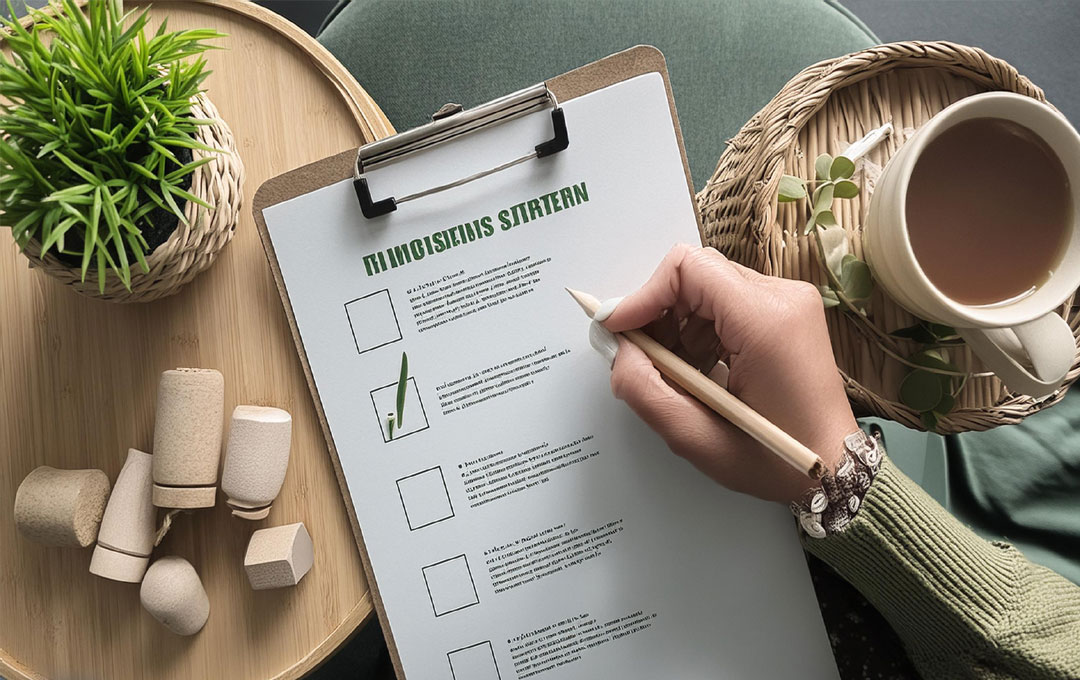 Finding the right interior designer involves more than just admiring their portfolio. It requires asking the right questions to ensure they are the best fit for your project. Here is a comprehensive checklist of questions to help you evaluate potential designers effectively.
Finding the right interior designer involves more than just admiring their portfolio. It requires asking the right questions to ensure they are the best fit for your project. Here is a comprehensive checklist of questions to help you evaluate potential designers effectively.
Questions About Experience and Credentials
Understanding a designer’s background is crucial in determining their expertise and suitability for your project. Start with these questions:
Can you tell me about your design background and experience?
This question helps you gauge their level of expertise and areas of specialization. Look for designers with experience in projects similar to yours.
What professional credentials or affiliations do you have?
Membership in professional organizations like the American Society of Interior Designers (ASID) indicates a commitment to industry standards and continuous education.
Questions About Style and Portfolio
To ensure the designer’s style aligns with your vision, ask the following:
Can you show me your portfolio?
Reviewing their portfolio helps you assess their style, quality of work, and creativity.
How would you describe your design style?
Understanding their design philosophy helps you determine if their aesthetic aligns with your personal taste.
Can you provide before-and-after photos of previous projects?
These comparisons demonstrate the designer’s ability to transform spaces effectively.
Questions About Process and Communication
A successful design project requires clear communication and a well-defined process. Consider these questions:
What is your design process like?
This question reveals the steps they follow from concept to completion, ensuring you understand their approach and workflow.
How do you communicate with clients throughout the project?
Frequent and clear communication is essential. Ask how they provide updates and address concerns.
How do you handle revisions and feedback?
It’s important to know their approach to making changes based on your feedback.
Questions About Budget and Fees
Understanding the financial aspects is crucial for avoiding surprises. Ask about:
What is your fee structure?
Clarify whether they charge hourly, a fixed fee, a percentage of the project cost, or per square foot.
Can you provide a detailed estimate?
A thorough estimate helps you understand what’s included and identify potential additional costs.
How do you handle budget management?
Ensuring the designer can manage the budget effectively is key to avoiding overspending.
Questions About Availability and Timeline
Assessing their availability ensures your project can proceed without unnecessary delays. Consider these questions:
When can you start the project?
Their availability is crucial to aligning your project timeline with their schedule.
What is your estimated timeline for completing this project?
Understanding the timeline helps you plan accordingly and sets clear expectations.
How do you handle potential delays?
Knowing their strategy for managing delays ensures they can handle unforeseen issues without derailing the project.
Questions About Collaboration and Subcontractors
Interior design often involves collaboration with various professionals. Ask about:
Do you work with contractors or have preferred subcontractors?
Their network of reliable professionals can impact the quality and efficiency of the project.
How do you coordinate with other professionals involved in the project?
Effective coordination ensures smooth collaboration and timely completion.
Questions About Project Management
Good project management is vital for keeping everything on track. Inquire about:
Who will be managing the project on a daily basis?
Knowing the point of contact helps ensure consistent communication.
How do you track progress and ensure deadlines are met?
Their project management approach indicates their ability to stay organized and efficient.
Questions About Previous Client Experiences
Hearing about past client experiences can provide valuable insights. Ask the following:
Can you provide references from previous clients?
Speaking with former clients can give you a better understanding of the designer’s reliability and work quality.
What challenges did you face in past projects, and how did you overcome them?
Understanding how they handle challenges shows their problem-solving skills and adaptability.
Conclusion
Finding the best interior designer near you can be a rewarding journey if you know what to look for. Start by doing thorough research online and asking for recommendations. Check their portfolio to see if their style matches your vision. Make sure they have the right experience and credentials, and understand their fee structure and availability. Pay attention to their communication skills to ensure they listen to your needs and keep you updated throughout the project. Finally, ask the right questions to make sure they’re a good fit. By following these steps, you’ll be well on your way to finding a talented designer who can bring your dream space to life.



